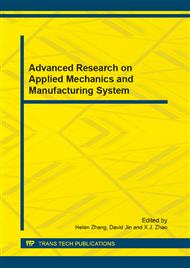p.398
p.404
p.410
p.414
p.418
p.422
p.426
p.433
p.438
The Development of Forming Analysis Technology for Material Selection Based on Different Manufacturing in REF SILL OTR-R/L Auto-Body Panel Stamping
Abstract:
Using a new method in this study, we were able to solve the problem with the existing method, which was panel manufacturing after selecting the most appropriate material from the possible manufacturing material. The possibility of application in the practical industry site and validity were verified. This study involves analyzing the stamping process problems by using AutoForm commercial software, which used the static-implicit method. According to this study, the results of the simulation will provide engineers good information to access the die design for optimization.
Info:
Periodical:
Pages:
438-442
Citation:
Online since:
December 2012
Authors:
Price:
Сopyright:
© 2013 Trans Tech Publications Ltd. All Rights Reserved
Share:
Citation:


